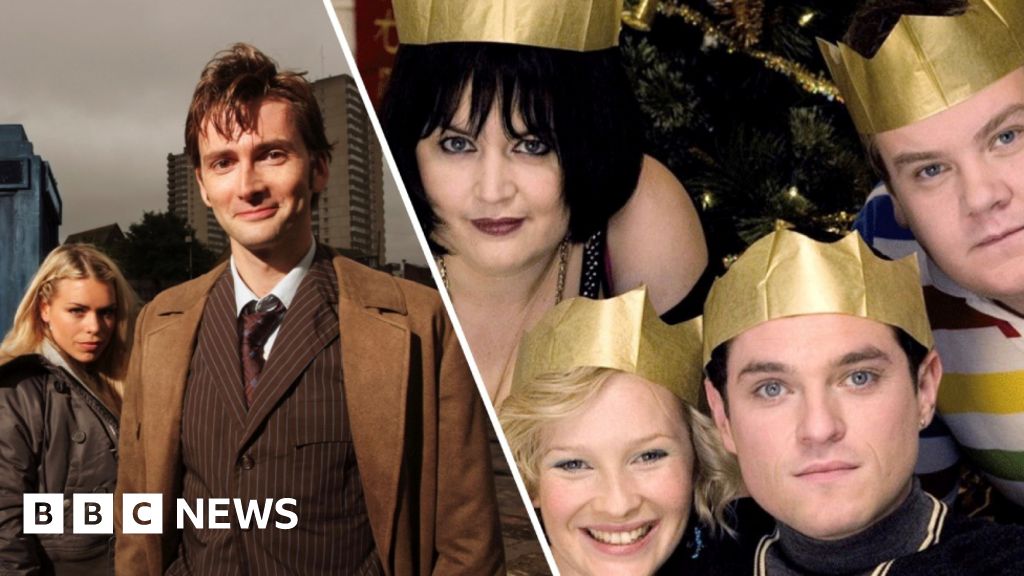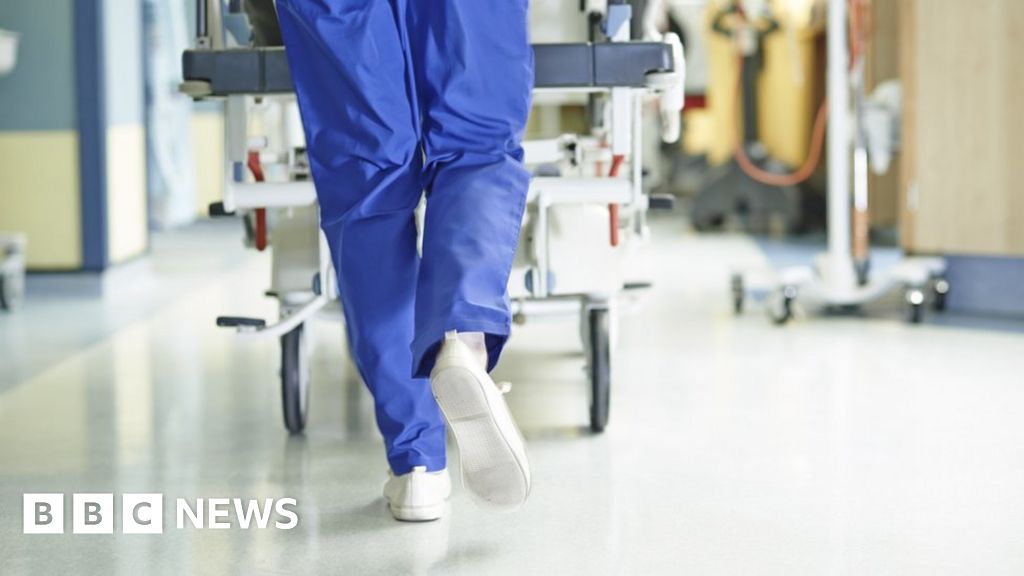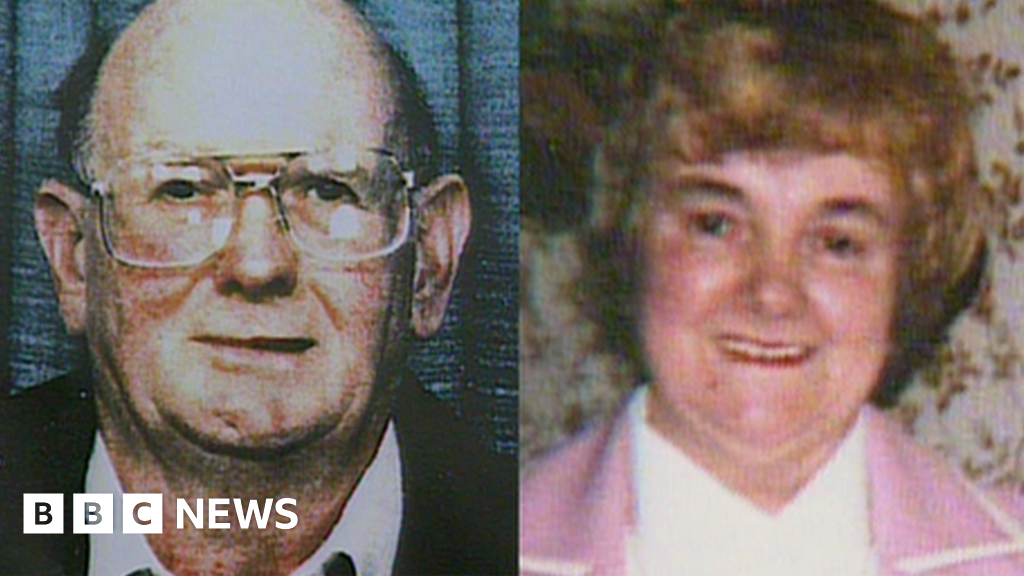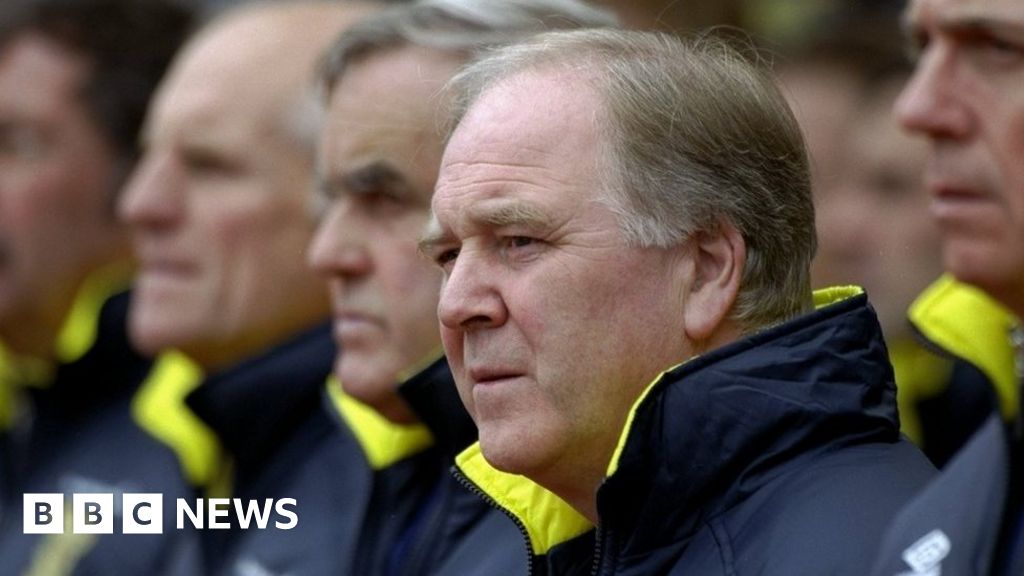[ad_1]
From a singer above a shop to Grand Slams, the BBC has covered it all in Wales in the last 100 years.
It started with a sing-song as it so often does in Wales and part of its legacy is the phrase ‘what’s occurring?’ and the world’s most famous doctor.
But the BBC in Wales hasn’t just given us shows like Gavin and Stacey and Doctor Who, it’s covered the most important events in the country’s history.
As Monday marks the 100th anniversary of the BBC’s first broadcast in Wales, I’ve looked in the archives to find its most significant moments since 1923.
National Eisteddfod – since 1924
When baritone Mostyn Thomas sang traditional Welsh language folk song Dafydd y Garreg Wen on the evening of the BBC’s first broadcast from Wales on 13 February, 1923, it signalled the start of celebrating Welsh culture on the airwaves.
Back then, Cardiff’s 5WA was the only BBC radio station in Wales and it was where The Royal National Eisteddfod of Wales was first broadcast on the BBC on 3 August, 1924.
The Radio Times in August 1924 reported that the Prince of Wales attended the 1924 National Eisteddfod of Wales in Pontypool
Now the National Eisteddfod is the BBC’s third biggest outside broadcast behind Wimbledon and Glastonbury with coverage in both Welsh and English languages.
Tryweryn Dam – 28 October, 1965
The damming of the River Tryweryn and flooding the Snowdonia village of Capel Celyn to create a reservoir to provide an English city with water is among the most controversial moments in modern Wales.
The reservoir for the then Liverpool Corporation was agreed in a bill passed by parliament – although not a single Welsh MP voted in favour. The city of Liverpool has since apologised for the “hurt” and “insensitivity” caused.
Capel Celyn was flooded in 1965 to create Tryweryn reservoir, to supply water for the people of Liverpool
The creation of Llyn Celyn is widely seen as a catalyst for a growing devolution movement. The dam was bombed during its construction in February 1963.
The year after it opened, the man that spearheaded the campaign to stop Tryweryn became Plaid Cymru’s first MP.
Severn Bridge – 8 September 1966
Once upon a time, a trip from south Wales to London – or even Bristol – would take motorists all day. But with the cutting of a ribbon by The Queen in 1966, that journey time was slashed as the first Severn Bridge opened south Wales up like never before.
BBC archive: the day the Severn Bridge opened 50 years ago
The Severn Bridge was also part of Wales’ first stretch of motorway, making south Wales a better connected region for day-trippers, businesses and commuters alike.
Aberfan disaster – 21 October 1966
It was one of the darkest days in Wales’ history when, after weeks of torrential rain, 144 people – 116 of them children – died after a coal tip slid down onto Aberfan in the south Wales valleys.
Pupils had arrived for their final day before the October half-term just a few minutes before coal tip number seven engulfed Pantglas Junior School, as well as houses in that part of the village.
Prince Charles’ investiture – 1 July 1969
He was just 20 years of age when the young Prince Charles was formally invested as the Prince of Wales at a lavish event at Caernarfon Castle.
The six-hour broadcast was watched by a TV audience of 500 million people around the world.
Prince Charles’ investiture ceremony took place in Caernarfon Castle
The Prince of Wales title and investiture polarised opinion in Wales. The event was conducted against a backdrop of protests – and even bombings.
Gareth Edwards’ try – 27 January 1973
Few things are more synonymous with Wales than rugby, and while there are many great Welsh rugby wins over the years, the greatest moment has to be THAT try from Gareth Edwards.
Watch Gareth Edwards score THAT Barbarians try told by the wonderful BBC commentator Cliff Morgan
Edwards was playing in Cardiff but for the Barbarians, not Wales, against the mighty All Blacks in January 50 years ago when…. well, click the video above and watch for yourselves.
Miners’ Strike – 1984-85
The industrial action started in March 1984 as miners from Wales joined those from across the UK in picketing pits in an attempt to stop the National Coal Board and Prime Minister Margaret Thatcher’s Tory government shutting mines that were becoming less profitable.
The BBC looks back on documenting the miners’ strikes of 1984-1985.
The mines were the income of hundreds of Welsh families and the strike lasted a year, but ultimately saw the decline of the industry.
Fireman Sam – 17 November 1987
Pontypandy’s most famous resident actually heard his fire bell chime on Welsh language TV first as Sam Tan. But a few weeks later, Sam became the hero next door on the BBC too – and soon became a worldwide hit.
The making of Fireman Sam’s much-loved characters
Fireman Sam – the cartoon of choice to a certain heir to the throne, Prince George – is Wales’ biggest children’s TV export, broadcast in 155 countries across the world in 36 languages.
Sea Empress – 15 February 1996
The numbers were staggering when a 147,000 tonne tanker spewed 72,000 tonnes of oil over 120 miles (193km) of coastline when it ran aground on rocks in west Wales.
The Sea Empress disaster in 1996 was Britain’s third largest oil spillage at the time
The Sea Empress was on its way to an oil refinery near Pembroke when disaster struck – and spilled crude oil onto the UK’s only coastal national park.
Welsh devolution – May 1999
“Good morning, and it is a very good morning in Wales” is what the then Welsh secretary Ron Davies said when Wales voted to have its own government, in what was described as “one of the most important days in the history of our country”.
The Queen opens the newly-created Welsh Assembly in Cardiff in 1999
Alun Michael led the first minority Labour administration when the assembly met for the first time in Cardiff Bay in 1999, weeks before The Queen and Prince of Wales officially opened the new administration.
FA Cup final – 12 May 2001
Playing English football’s showpiece occasion outside of England for the first time while Wembley Stadium was rebuilt initially caused controversy.
Liverpool’s Michael Owen scored two late goals to beat Arsenal and win first FA Cup final in Cardiff in 2001
But fans soon grew to love FA Cup finals being played in Cardiff as the Welsh capital was beamed across the globe.
Doctor Who – 26 March 2005
Doctor Who was a science fiction cult TV classic back in the day, but it exploded into a global phenomenon when it got a reboot by BBC Wales and renowned Welsh screenwriter Russell T Davies in 2005.
Warning: Third party content may contain adverts
It became the centrepiece of BBC One’s Saturday schedule and attracts a global audience of 100 million people across 65 countries.
Gavin and Stacey – 13 May 2007
It’s the hit BBC sitcom that has proved to be one of the UK’s biggest and best of the 21st Century – and it is filmed around the seaside town of Barry.
Warning: Third party content may contain adverts
Gavin and Stacey is the comedy that coined a host of catchphrases like Nessa’s “tidy” and ‘Oh, what’s occurring?’ – and its comeback Christmas special in 2019 was watched by more than a quarter of the UK’s population.
[ad_2]
Source link




